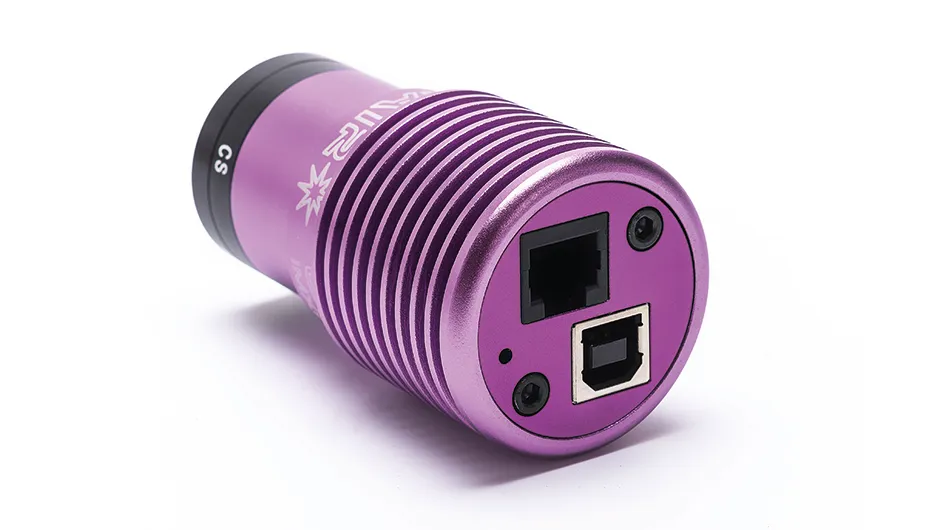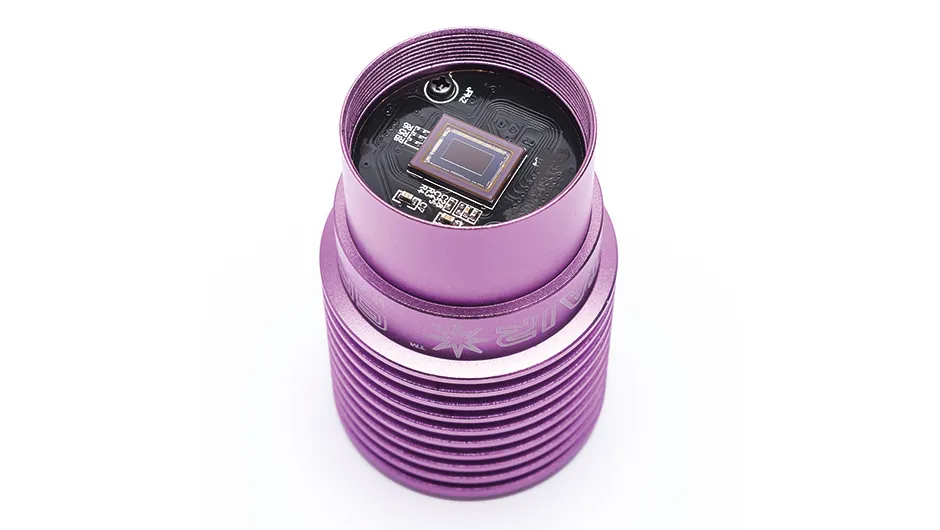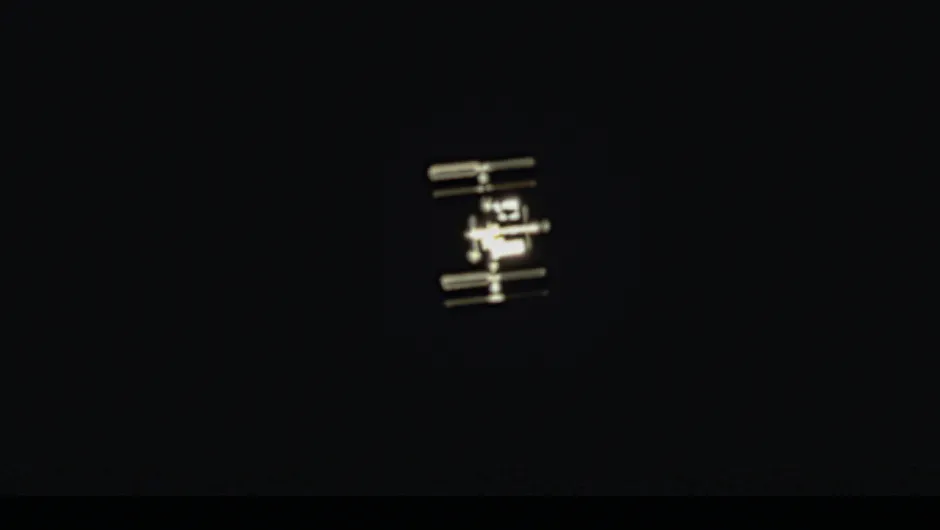Price: £219.99
Weight: 95g
Supplier: Altair Astro
Telephone: 01263 731505
Website: www.altairastro.com
Do you remember the early era of webcam imaging?
The latest version of Altair Astro’s popular GPCAM ably demonstrates how technology has progressed since then.
Long gone are the days of spending more time cobbling adaptors and webcams together than doing actual astronomy with them.
The GPCAM2 290C is an attractively priced colour camera that requires a computer to operate.
After downloading and installing the software, the camera can simply be plugged into a USB 2.0 socket and controlled by the AltairCapture program.
There is no need for an external power supply.
The camera is light – considerably lighter than many eyepieces, in fact – and yet packed into its compact body are some heavyweight features.
Keen to try it on a range of astronomical targets, we started by capturing a video file of the large active region AR 2665 on the Sun just before it disappeared beyond the limb.
Using a white light solar filter, under flaky seeing conditions, the fast frame capture of the camera gave us a reasonable recording of the region.
The Moon managed to evade us completely, but we did capture a sequence of Saturn, low in the sky amid a murky atmosphere.
The camera’s region of interest feature allowed us to isolate Saturn in the frame, and thus enable a faster capture rate and smaller file size, which could then be stacked into a detailed image.
The GPCAM2 290C is eminently suited to planetary imaging, and the software makes it easy to adjust the settings so that the maximum amount of detail can be resolved.

A transient test
Realising that the International Space Station would pass overhead during the review period provided us with an opportunity to test the camera on a truly dynamic target that varies greatly in brightness as it crosses the sky.
The camera proved quick to respond to adjustments in gain and exposure length in video mode, a key requirement for making the most of short-lived photo opportunities.
With exposure lengths adjustable between 0.105 milliseconds to 1,000 seconds, there are very few astronomical targets beyond the reach of this device.
With such a range of adjustment, and small 2.9x2.9µm pixels allowing for a high-resolution image (0.57 arcseconds per pixel with our telescope), it occurred to us that the camera may be useful for recording images of double and multiple stars.
Starting with the obvious and beautiful Albireo in Cygnus, we noticed that the colours of its componentswere clearly apparent both in live view mode and in single exposures.
Moving to trickier targets it was most gratifying to be able to capture colour images of the Double Double in Lyra.
Even Iota Cassiopeiae revealed tantalising glimpses of its multiple stars.

Going deeper
Yet the camera’s most impressive capability is its competence with deep-sky targets.
We tried it on several Messier objects, including the Ring Nebula in Lyra, The Dumbbell Nebula in Vulpecula and the mighty Andromeda Galaxy.
The camera also performed admirably on fainter targets such as NGC 7635 in Cassiopeia, also known as the Bubble Nebula.
When turned to the Ring Nebula, M57, we couldn’t help but say wow when the first image appeared on screen, a test exposure of just a few seconds with a high gain setting.
The resulting picture had remarkable detail. Not only were the reds and blues of the nebula clearly visible, but so were the central star and background stars behind M57, and good clarity in the bright outer edges of the ring of gas itself.
The GPCAM2 290C also has an ST-4-ompatible port, so it can be employed as a guide camera too.
This device is easy and fun to use, and very capable across a wide range of targets.

Outstanding feature: All-round appeal
Cast your mind back to Polaroid cameras: just click and a few shakes later, voila! Easy photography that anybody could do.
The GPCAM2 290C reminds us of those cameras.
It’s easy to use and quickly produces great results, and would seem to be the ideal device for anyone wishing to get started in astrophotography, or even for seasoned observers who would like to also acquire a visual archive of the night sky without spending a fortune.
The camera can be easily swapped with an eyepiece, and we can imagine a night observing as normal, and every so often switching over to record with the GPCAM2 290C.
The beauty of the camera is that its sensitivity allows you to take a lot of very short exposures and stack them together to produce an impressive end result – such as our view of M57 (above).
For anybody who struggles with autoguiding, accurate polar aligning, has an altaz mount, or just generally wants to take a reasonable picture without too much preparation, the GPCAM2 290C may be the ideal camera.

Sony IMX290 CMOS chip
Extremely sensitive to even faint light, the CMOS camera sensor produces images with very low read noise and negligible amp glow on short exposures.
The 1,920x1,080-array provides over two million pixels, each 2.9µm square.
Region of interest imaging allows smaller files to be captured where desirable.
ST-4 guide port
The GPCAM2 290C is also a guide camera.
With a built-in ST-4 port for direct connection to most popular mounts, the camera is easily sensitive enough to pick out suitable guide stars.
It’s also compatible with the ever-popular PHD2 software.
Stable USB transfer
Transferring individual frames larger than 2MB each is accomplished by the improved electronics boards in this version of the GPCAM.
Benefits include improved frame buffering, resulting in fewer dropped frames during video capture, and stable USB data transfer.
Heat-sink fins
The build-up of internal heat can be a problem for astronomical cameras, resulting in noisy images.
The sleek design of the body incorporates fins, which serve to multiply the surface area of the camera body considerably, allowing for greater thermal dissipation.
Altair Capture software
Free to download, this capable software works hand in hand with the GPCAM2 290C.
It is easy to swap between live view and trigger mode, choose a region of interest or change from 8-bit to 12-bit imaging.
The simple, uncomplicated interface is a boon for sleep-deprived astronomers.
This review originally appeared in the October 2017 issue of BBC Sky at Night Magazine